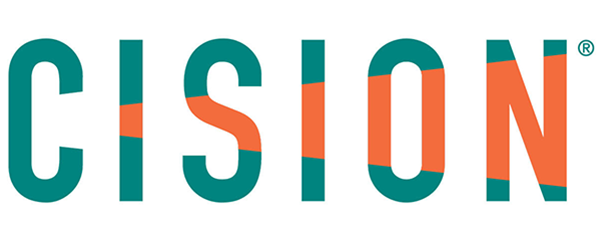
Todd H Lanman is a spine surgeon known for his work on the advancement of total disc replacement surgery and motion preservation. Following his own experiences undergoing a number of spinal surgeries, Lanman has pursued a career dedicated to the restoration of his patients’ mobility. Here, he argues for the modernisation of cervical spine surgery by advocating for the routine use of cervical disc replacement.
Historically, when patients had degenerative disease in the hip and knee, we surgeons fused the joints. It relieved pain, the joints were stabilised, but range of motion was terrible. As artificial knee and hip joints were shown to be safe, effective, and to greatly improve health related quality of life, we moved away from fusion and towards artificial joint replacement of these joints. For knees and hips, artificial joint replacement is now routine. When these artificial knees or hips fail, we do not take out the artificial joint and perform a fusion, we simply replace the artificial joint with another. In fact, if the situation warranted, we would revise a hip or knee arthrodesis and place a new artificial joint.
Unfortunately, we still follow the old model for treating cervical disc disease. In patients who have had failed artificial disc replacements, most surgeons will remove the disc and fuse the spine there. Likewise, a cervical spine fusion is often viewed as the operation of no return. I am advocating a new approach. Instead of fusion, I suggest we remove the failing disc (or perhaps revise a fusion), fix the problem (for example bone spur) and install a new artificial disc. Essentially, I want to bring cervical spine surgery into the modern age, where knees and hips have been for some time already.
I cared for a woman from Texas who had a three-level cervical fusion from C3 to C6. She came to see me because another disc had failed at C6-C7. She was an avid golfer, and did not want any further cervical fusion surgery performed. Her range of motion was already far more limited than she would like. She asked that I treat the C6-C7 level with an artificial disc. She was an off label candidate for artificial disc replacement at C6-C7, below her three-level fusion. However, as we were discussing the procedure, she specifically asked whether it might be possible to remove the fusion. At the very least, she wondered, could I revise at least one of the fusions and replace that with an artificial disc, in order to improve her neck mobility.
After reviewing her CT scan, her facet joints did appear opened and healthy behind the fused disc of C5-6—this is the disc immediately above C6-7. They were not autofused, though the interbody space was autofused at C5-C6. After careful consideration, I told her I could remove the fusion. I explained I could carefully drill this area out and provide interbody distraction. If the facet joints permitted motion, then I could insert an artificial disc. I also explained that this was an off label use of the device and explained what that meant. After a thorough discussion of the risks and benefits, she was very eager to try this surgical option. In fact, her enthusiasm and strong desire for greater spinal mobility is what initially drove me to this route.
During surgery, I was able to drill out the fusion at C5–6, and, after seeing acceptable motion, I placed an artificial disc. Now, instead of having three discs fused, her cervical spine only has two discs fused, and she has two artificial discs. She now has three motion segments of the five discs in the cervical spine, as shown on the attached films, has far greater spinal range of motion, and has less pain. By all measures, the surgery was a success.
In my practice and as a principal investigator for a number of artificial disc device trials, I have come to learn that fusing more than two levels in the cervical spine often leads to severely restricted motion. After analysing the data, reversing cervical fusions and replacing them with artificial discs provides at least equivalent and often times superior results for the treatment of degenerative cervical disc disease, and enables select patients to regain motion in the spine and to live active and more functional lives. I have applied this technique to more than 10 patients with great success.
Of course, proper patient selection is critical. I have found that the best candidates for this procedure are those who are seeking disc replacement surgery and have failed unions called a nonunion. During pre-surgical planning, it is critical to obtain a CT scan with very thin cuts in axial, sagittal and coronal planes. If the facet joints appear open—not autofused at the fusion segment or at a nonunion segment—the anterior cervical plate and interbody spacer can be removed safely. Once the device is removed, it is important to carefully distract the interbody space and open it. Care must be taken as you move laterally to avoid the vertebral arteries, of course, and provide very thorough decompression of the nerve roots bilaterally. It is clear that when restoring motion, nerve root decompression is critical and must be extensive so that the patient does not create an impingement with the artificial disc in place. Artificial disc replacement and fusion can relieve pain and dysfunction; however, the goal of surgery should also be to restore motion, and keep the patient active and functional.
Artificial disc replacement accomplishes this last feat, where fusion does not. Given my successes with the approach and the successes I have seen in clinical research, I am therefore advocating revision with artificial disc replacement both for artificial disc replacement and prior fusion surgeries in the cervical spine in select cases. Just as the field has progressed in knees and hips, so too will the management of degenerative diseases of the cervical spine.
Todd Lanman is a spine surgeon at Lanman Spinal Neurosurgery, Los Angeles, USA.
Ready to reclaim your life? Get in touch with Dr. Lanman Today.
FOLLOW US ON SOCIAL MEDIA | @ADRSPINE



